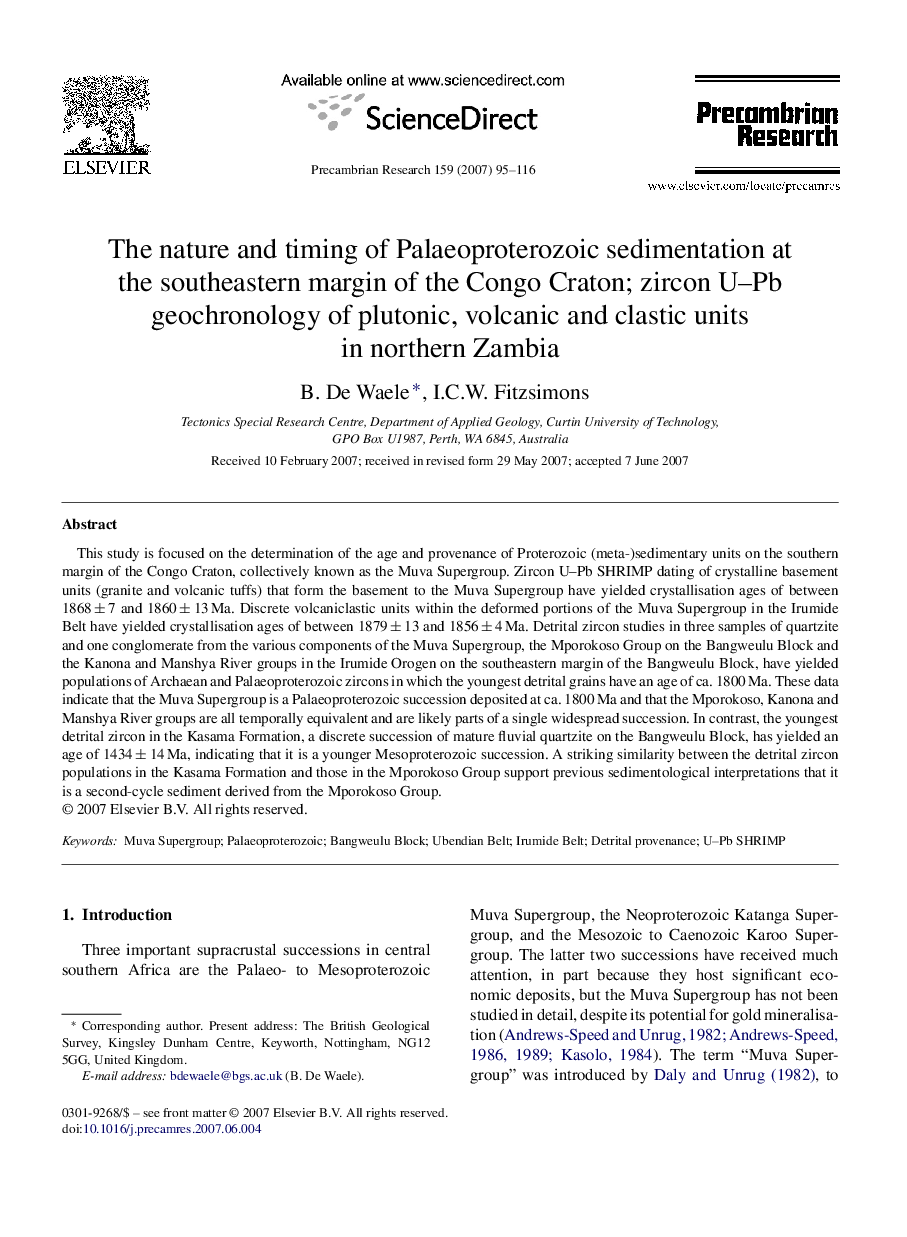| Article ID | Journal | Published Year | Pages | File Type |
|---|---|---|---|---|
| 4724566 | Precambrian Research | 2007 | 22 Pages |
Abstract
This study is focused on the determination of the age and provenance of Proterozoic (meta-)sedimentary units on the southern margin of the Congo Craton, collectively known as the Muva Supergroup. Zircon U-Pb SHRIMP dating of crystalline basement units (granite and volcanic tuffs) that form the basement to the Muva Supergroup have yielded crystallisation ages of between 1868 ± 7 and 1860 ± 13 Ma. Discrete volcaniclastic units within the deformed portions of the Muva Supergroup in the Irumide Belt have yielded crystallisation ages of between 1879 ± 13 and 1856 ± 4 Ma. Detrital zircon studies in three samples of quartzite and one conglomerate from the various components of the Muva Supergroup, the Mporokoso Group on the Bangweulu Block and the Kanona and Manshya River groups in the Irumide Orogen on the southeastern margin of the Bangweulu Block, have yielded populations of Archaean and Palaeoproterozoic zircons in which the youngest detrital grains have an age of ca. 1800 Ma. These data indicate that the Muva Supergroup is a Palaeoproterozoic succession deposited at ca. 1800 Ma and that the Mporokoso, Kanona and Manshya River groups are all temporally equivalent and are likely parts of a single widespread succession. In contrast, the youngest detrital zircon in the Kasama Formation, a discrete succession of mature fluvial quartzite on the Bangweulu Block, has yielded an age of 1434 ± 14 Ma, indicating that it is a younger Mesoproterozoic succession. A striking similarity between the detrital zircon populations in the Kasama Formation and those in the Mporokoso Group support previous sedimentological interpretations that it is a second-cycle sediment derived from the Mporokoso Group.
Related Topics
Physical Sciences and Engineering
Earth and Planetary Sciences
Geochemistry and Petrology
Authors
B. De Waele, I.C.W. Fitzsimons,
